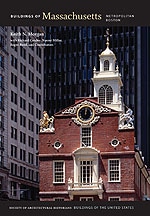
The earliest planned residential community in Concord, Nashawtuc Hill was the dream of railroad magnate Charles Henry Hurd, who acquired the land after 1860. In 1883, Hurd encouraged the establishment of the Concord reservoir on Nashawtuc Hill (gatehouse by John H. Chapman) and paid for the granite bridge across the Concord River at Thoreau Street to provide access to the site. Laid out by William Wheeler, engineer of the Concord water system, the residential development focused first on the loop of Nashawtuc Road around the hill and up to Willard Common, a park next to the hilltop reservoir. Generous lots with fine views and landscaped public areas added to the attractiveness of the site. The southern slopes of the hill, along Nashawtuc and Musketaquid roads, saw the earliest development, beginning with Wheeler's own house (1886, 190 Nashawtuc Road). After Hurd's death, Wheeler purchased the adjoining property in 1891 from Hurd's heirs and continued to develop the subdivision, extending along Musketaquid and onto Simon Willard roads. Throughout the development, large and handsome residences in the Queen Anne, Shingle, and Colonial Revival styles were built for some of the most prominent citizens between 1886 and 1930. Particularly fine are three houses on Simon Willard Road (numbers 199, 253, and 266) designed by Harry Little, including his own residence (1914) at number 263. Recreation was also an important element of this area, with the Concord Country Club leasing part of the property from 1895 to 1913 and with public slopes for sledding and skiing.

